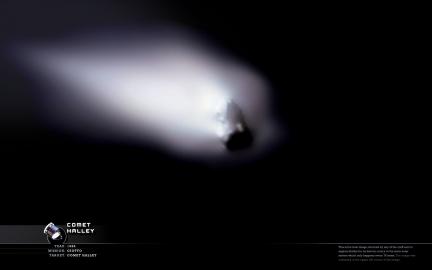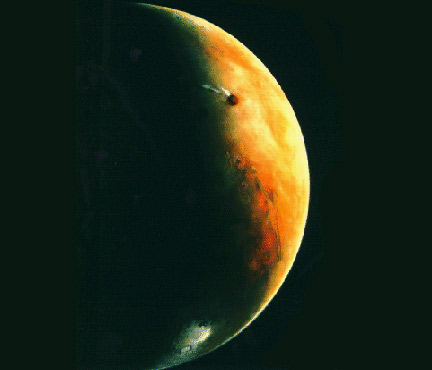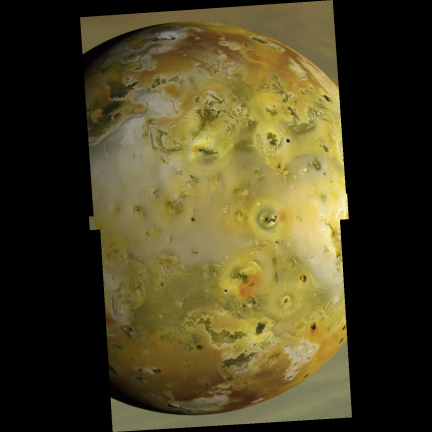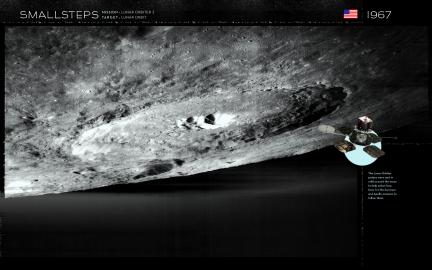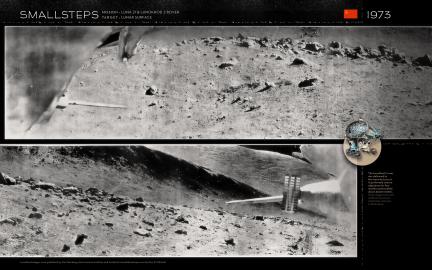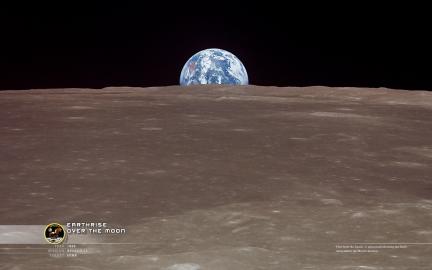 You can also follow the mission in real-time as history played out 40 years ago on twitter. Follow Mission Control, The Spacecraft or The Lunur Excursion Module (Eagle). The Eagle will not have much to say, obviously, until it is actually descending toward the surface of the moon on Monday, but it has just started making some noise on Sunday night.
You can also follow the mission in real-time as history played out 40 years ago on twitter. Follow Mission Control, The Spacecraft or The Lunur Excursion Module (Eagle). The Eagle will not have much to say, obviously, until it is actually descending toward the surface of the moon on Monday, but it has just started making some noise on Sunday night.
Echos of Apollo Online
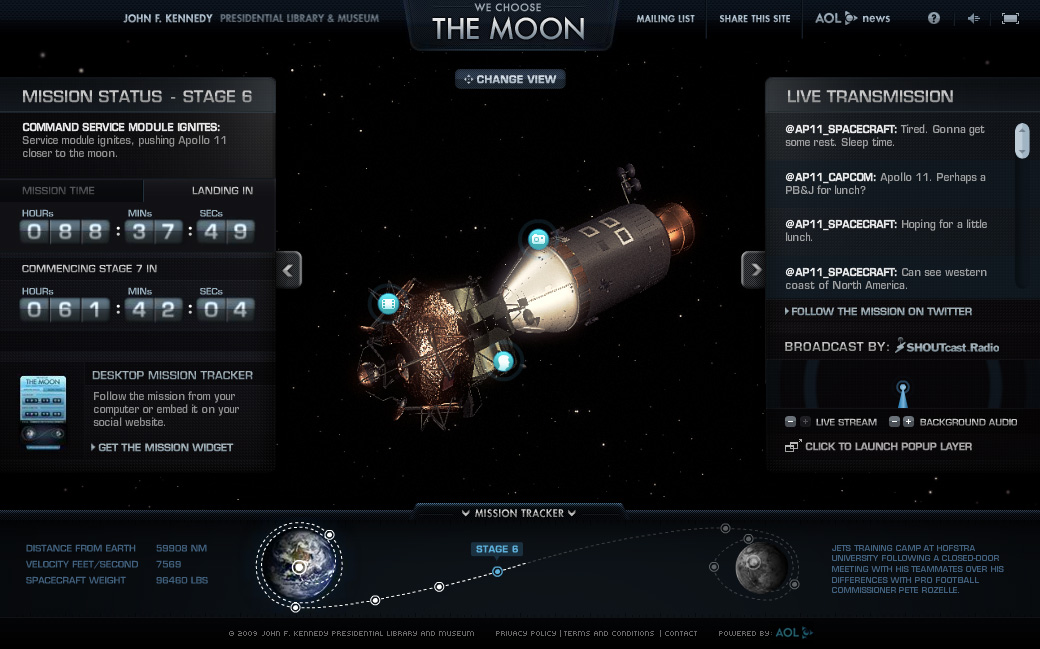 Follow the Apollo 11 mission in real time at wechosethemoon.org for the 40th anniversary of Apollo 11. The site comes complete with a gorgeous mission animation that shows the viewer what stage the mission is in as the data loads in the background. Once the page opens up we are treated to various interactive modules like photo and video galleries featuring material from the current stage of the mission as well as an oddly placed JFK and Apollo gallery.
Follow the Apollo 11 mission in real time at wechosethemoon.org for the 40th anniversary of Apollo 11. The site comes complete with a gorgeous mission animation that shows the viewer what stage the mission is in as the data loads in the background. Once the page opens up we are treated to various interactive modules like photo and video galleries featuring material from the current stage of the mission as well as an oddly placed JFK and Apollo gallery.
The best part is the real-time audio stream. As I am writing this, the astronauts are asleep and every 15 minutes mission control interrupts the static to essentially report how long they have been asleep and that the mission is progressing nominally. As boring as that is… it sure makes it real and takes those too young to have been a part of it as close to knowing how that might have felt to follow this historic event. Of course, the whole thing peaks on the 20th with the real-time streaming of touch down at Tranquility Base.
Also see NASA’s newly restored footage of Apollo 11 and Neil Armstrong’s magnificent first step.
Apollo 11 Owners Manual
 If happen to come to own one of these bad boys from the late 60’s early 70’s you are going to need this owners manual. The original owners of these models rarely have this on-hand. If you are in the market, beware of any models from the 13 line since that model had a well-known faulty oxygen tank that is likely to scrub any potential trips to the Lunar surface you may have planned. Get it from Haynes online.
If happen to come to own one of these bad boys from the late 60’s early 70’s you are going to need this owners manual. The original owners of these models rarely have this on-hand. If you are in the market, beware of any models from the 13 line since that model had a well-known faulty oxygen tank that is likely to scrub any potential trips to the Lunar surface you may have planned. Get it from Haynes online.
Moon Restored
 The Lunar Orbiter Image Recovery Project has been working to restore historic images from the Lunar Orbiter missions which were launched during the years 1966 and 67. These images have been remastered from the original data sets with today’s computing technology resulting in not only reducing the noise, but brought out details that were not possible with the technology available when they were taken. The above image is just a section of the original (seen below) and is also a work-in-progress so you will still notice the striping and other anomalies.
The Lunar Orbiter Image Recovery Project has been working to restore historic images from the Lunar Orbiter missions which were launched during the years 1966 and 67. These images have been remastered from the original data sets with today’s computing technology resulting in not only reducing the noise, but brought out details that were not possible with the technology available when they were taken. The above image is just a section of the original (seen below) and is also a work-in-progress so you will still notice the striping and other anomalies.
Although, as a graphic designer I have to say the original has it’s charm too. I like the distortion, noise and various odd anomalies of these historic missions so much that it led to my making the Smallsteps series of wallpapers last year. Maybe this new LOIRP image needs to be added to that collection… but I would probably stick with the original for the effect. I love the work they are doing, but I also like that you can see the history in these old crusty images too.
Ted Stryk’s Triton Redux
 Planetary Blog has a nice review of Voyager 2’s flyby of Neptune’s moon Triton. That was 1989 and sadly, there is no way we will be seeing any new Triton images for at least 20 years as no missions are currently approved. There is a concept mission being considered for a New Frontiers class probe which is where we even get the number 20 from, but if that mission is not approved… who knows.
Planetary Blog has a nice review of Voyager 2’s flyby of Neptune’s moon Triton. That was 1989 and sadly, there is no way we will be seeing any new Triton images for at least 20 years as no missions are currently approved. There is a concept mission being considered for a New Frontiers class probe which is where we even get the number 20 from, but if that mission is not approved… who knows.
Ted Stryk has been re-working the old Voyager mission images at Triton and the results are shockingly sharp and high resolution. Ted’s work is also used on this “portrait” image of Triton, but this image shown above is another view and is comparatively massive in size for the Voyager Uranus/Neptune encounters.
Uranian Moons, I Hardly Know Ye
 Its not something we are likely to see again anytime soon, so it is especially nice of Ted to re-image these old voyager images. These are the definitive best shots of each of these bodies, with perhaps the exception of Miranda (second from left, note there is a tiny dark moon which is first). Of the Uranian family, Miranda also happens to be the most interesting (of what know) with its cracks and ridges that somewhat resemble those processes happening on Enceladus and Europa.
Its not something we are likely to see again anytime soon, so it is especially nice of Ted to re-image these old voyager images. These are the definitive best shots of each of these bodies, with perhaps the exception of Miranda (second from left, note there is a tiny dark moon which is first). Of the Uranian family, Miranda also happens to be the most interesting (of what know) with its cracks and ridges that somewhat resemble those processes happening on Enceladus and Europa.
Peace on Earth and Goodwill Toward Men
 Almost exactly 50 years ago, America was playing catch up with the Soviet Union and their multiple successes with the Sputnik series of spacecraft. President Eisenhower feared the Soviets would receive any use of military rockets to deliver spacecraft as a threat to their national security and not as a means to achieve our own scientific goals. For this reason, America’s early attempts to put a satellite in orbit were all failures and eventually placed the US in the embarrassing position of having no success in space vs. the Soviet’s many.
Almost exactly 50 years ago, America was playing catch up with the Soviet Union and their multiple successes with the Sputnik series of spacecraft. President Eisenhower feared the Soviets would receive any use of military rockets to deliver spacecraft as a threat to their national security and not as a means to achieve our own scientific goals. For this reason, America’s early attempts to put a satellite in orbit were all failures and eventually placed the US in the embarrassing position of having no success in space vs. the Soviet’s many.
When America finally did resort to using the military class Jupiter rockets to deliver the Explorer series of satellites, the space race had begun and America’s losing streak was over. As Eisenhower feared, the Soviets immediately reacted by protesting Explorer’s “violation” of Soviet borders as the satellite had an orbit that passed over their air space (despite the fact that Sputnik had done the same over the US). To help tamp down any perceptions that the American space program was a militaristic show of aggression, Eisenhower asked NASA to make it’s next launch a different kind of satellite.
On December 18, 1958 the SCORE satellite was placed into orbit and became the world’s first communications satellite by broadcasting the following message:
"This is the President of the United States speaking. Through the marvels of scientific advance, my voice is coming to you via a satellite circling in outer space. My message is a simple one: Through this unique means I convey to you and all mankind, America's wish for peace on Earth and goodwill toward men everywhere."
Happy New Year.
Wanderingspace’s Comet Halley #1
The Planetary Blog today posted an animation of Comet Halley captured by Vega 1 in 1986. The low quality of the Vega images reminded me of how low quality all the mission images to Halley were for their historic encounters. There was one image I found of Halley taken by Giotto that seemed to me to be the best I had ever seen in terms of detail and captured much of the coma that envelopes the nucleus as well. Here is that original image which was found at www.astro.lu.se.
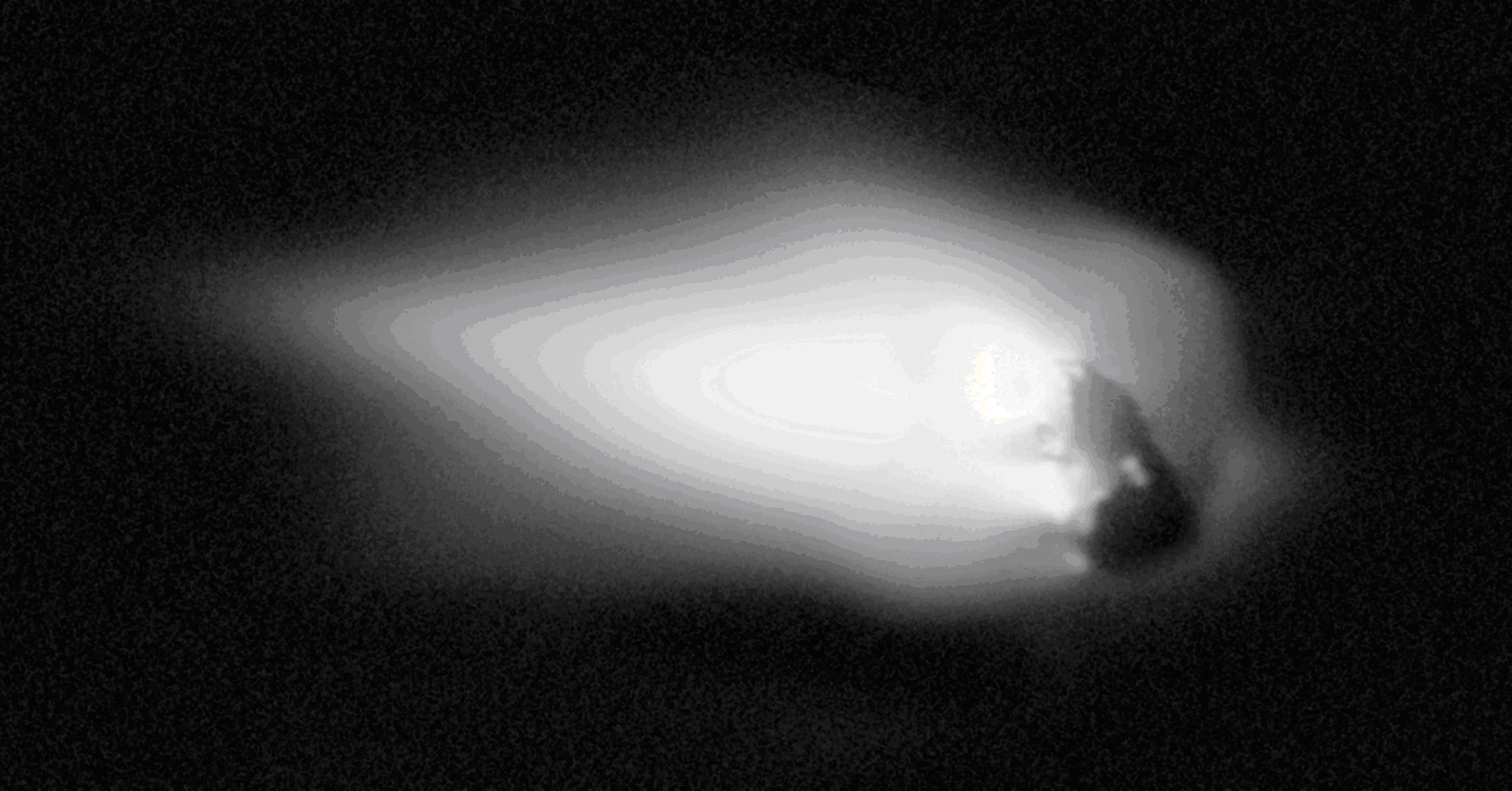
The odd thing about it is the rarity of its use anywhere and the site that provided it gives no other detail about it other than “Nucleus of Comet Halley. Giotto fly-by 1986”. So out of curiosity, I decided to do a google image search for “Comet Halley” and turns out that the wallpaper image created by wanderingspace that features this image comes up first!
In the interest of full disclosure, I thought I would post the original to show how it was beautified. Most of the work was really cleaning up the noise and removing artifacts. Much of that noise was in the form of posterization and happens in the coma. So that noise was largely blurred out since the coma would pretty much just be a large blur of white at any rate, but the rate of gradation was still maintained for some level of legitimacy. Color was added to the image last, but that is entirely artistic. That and the upper left corner of the coma which was extended to fill the frame are the only fictional parts of the image.
All in all… it seems to me that when you remove the artifacts, you pretty much have the final image which was used for the wallpaper image. Less manipulation and more “clean-up” which is what I try to do with all images here when needed.
What We Can Do With Old Mission Photos
 These above images of Mars were composited by Emily Lakdawalla and display a staggering improvement over what we have seen published over and over again since the Viking missions took place in the mid-70’s (see below). You may be familiar with the bottom image as it is one of the few images of Mars taken in a crescent phase. I never would have guessed that by simply re-compiling the data with today’s everyday image software, it was possible to bring out the real beauty hidden within the data.
These above images of Mars were composited by Emily Lakdawalla and display a staggering improvement over what we have seen published over and over again since the Viking missions took place in the mid-70’s (see below). You may be familiar with the bottom image as it is one of the few images of Mars taken in a crescent phase. I never would have guessed that by simply re-compiling the data with today’s everyday image software, it was possible to bring out the real beauty hidden within the data.
An Ionian Blog
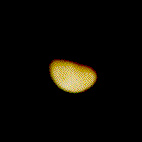 One of the most fascinating places in the Solar System to study would have to be the Jupiter moon Io. Previous to Voyager, the only image of Io available would be this image (at left) taken by the Pioneer 11 mission in 1974 which only hinted at what was to come with its slightly orange hue. Beyond this most scientists thought that Io would be another highly cratered and dusty moon very much like our own until Voyager returned its first highly detailed images. You can only image the shock of mission specialists when they got a look at this yellow, red and white pizza moon which was completely void of any sign of cratering.
One of the most fascinating places in the Solar System to study would have to be the Jupiter moon Io. Previous to Voyager, the only image of Io available would be this image (at left) taken by the Pioneer 11 mission in 1974 which only hinted at what was to come with its slightly orange hue. Beyond this most scientists thought that Io would be another highly cratered and dusty moon very much like our own until Voyager returned its first highly detailed images. You can only image the shock of mission specialists when they got a look at this yellow, red and white pizza moon which was completely void of any sign of cratering.
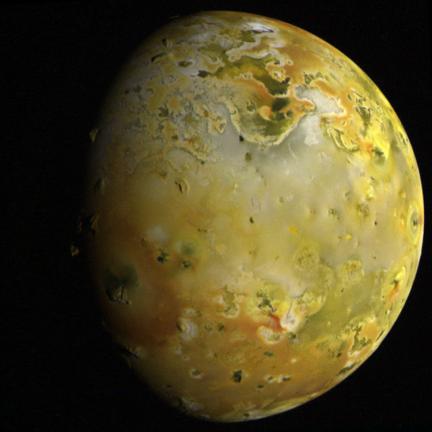
As it turned out, Io happens to be the most highly volcanic body in the entire Solar System. Enter the Galileo mission of the 90’s which stuck around for a while staying in orbit around Jupiter and not just driving by. Jason Perry is part of the Cassini Mission imaging team and has been re-processing these Galileo images of Io in his spare time. He has posted a large collection of these images as well as publishing a blog that specializes on all things Io and the images selected here are some of Jason’s recently processed favorites.
These two images are natural color images and most likely best represent what the human eye might see out the portal window of their spacecraft. When asked what he might like to say about these images to a general audience Jason responded, “The colors you see in these two images are largely the result of sulfur and related compounds. Sulfur on Io produced the general yellowish color of much of the surface. The reddish color of the polar regions is the result of radiation-damaged* sulfur. The whitish areas on the surface are the result of Sulfur dioxide: an industrial pollutant on Earth, a frost on Io.” Good information to mention about a highly volcanic moon as many people probably assume that all that red and yellow is similar to the molten rock images you see from here on Earth.
* Jupiter’s magnetosphere traps the solar wind which produces a large amount of radiation. Io orbits within a region that is highly saturated by this radiation.
Smallsteps Wallpaper: Lunar Orbiter 3
Smallsteps Wallpaper: Lunar Orbiter 1
In August 1966 NASA began the Lunar Orbiter series of missions that were intended to get up-close images of smooth areas of the moon suitable for landing both Surveyor unmanned lander probes as well as the eventual manned missions of Apollo. Note that these missions had only begun 3 short years before the successful Apollo 11 mission that saw mankind take its first steps onto the surface of another world… now that is some turn-around time! Lunar Orbiter 1 actually took place while the Surveyor series of missions had already begun. This would suggest that some of the data obtained from the Lunar Orbiter probes were collected and used immediately in the execution of Surveyor missions.
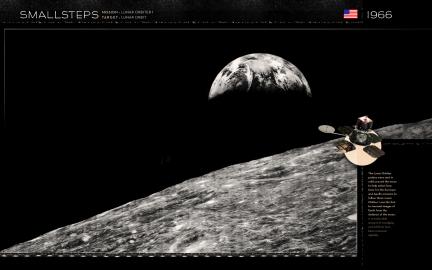
This first Lunar Orbiter mission is credited for returning the first 2 images of Earth as seen from the distance of the moon. Most people refer to these kinds of images as “Earthrise” images, although that description is incorrect in the traditional sense of the word. Since the same side of the moon always faces Earth, an Earthrise is only possible in a Lunar orbiting spacecraft that is in effect chasing the Earth. Down on the surface of the moon… if you can see Earth in the sky, then you will always see Earth in the sky. It will always be in the same place, at the same size and at all times of the Lunar day.
Ranger IX, Camera A
A while back wanderingspace posted 2 great animations of the Mariner flybys of Mars. They had a great nickelodeon feel to them and are two of the best posts on this blog (in our opinion). So when Emily Lackdawalla posted recently on the first “earthrise” as seen from a probe in orbit around the moon – she linked to this great database of moon shot mission images from the 60’s. Glimpsing at these collections, it was clear that there existed the same potential for another nickelodeon style animation of a trip to the moon.
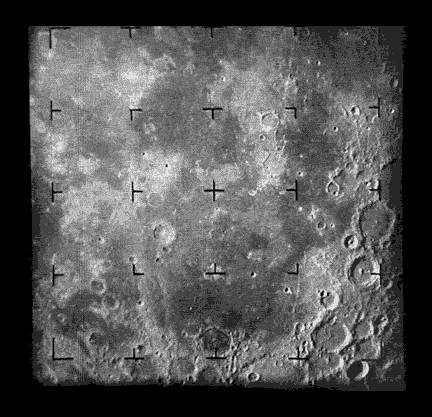
The mission shown above is Ranger IX and there are many more potential animations that can be made from other Ranger missions or from the Lunar Orbiter series of images. Maybe one day.
Sorry for the huge file size… about 1M.
Smallsteps Wallpaper: Surveyor 1
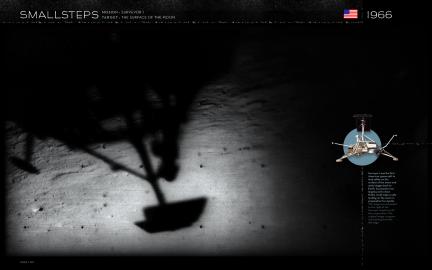 Look at the date on this mission. It’s 1966… 3 years before the Apollo 11 manned landing on the moon. It shows you what we as a species could really do had we the initiative to do it. Just 3 years after landing the first unmanned probe on the surface of the moon… we were ready to send people. That would almost be like sending men to Mars just a few years after Viking landed in 1976. Okay… it is much further away than the moon and many other technical difficulties as well. So lets say that it would been like sending people to Mars 10 years after Viking. That would be 1986 and here we are 20 years after that saying it will still take another 15.
Look at the date on this mission. It’s 1966… 3 years before the Apollo 11 manned landing on the moon. It shows you what we as a species could really do had we the initiative to do it. Just 3 years after landing the first unmanned probe on the surface of the moon… we were ready to send people. That would almost be like sending men to Mars just a few years after Viking landed in 1976. Okay… it is much further away than the moon and many other technical difficulties as well. So lets say that it would been like sending people to Mars 10 years after Viking. That would be 1986 and here we are 20 years after that saying it will still take another 15.
The Surveyor craft was sent to the surface of the moon largely just to prove that we could do it. It was doing what its name suggested… surveying places for Apollo to plant a few flags.
Smallsteps Wallpaper: Luna 9
 The very first time we humans ever had a look at the surface of another world was in 1966 with the Luna 9 spacecraft. The event is nearly wiped from our collective memory after the successes of Apollo, but at the time this was another feather in the cap of the Soviet Space Program. Now they were able to claim the first successful touchdown as well as first man in space, first spacewalk, first object in space… you name it.
The very first time we humans ever had a look at the surface of another world was in 1966 with the Luna 9 spacecraft. The event is nearly wiped from our collective memory after the successes of Apollo, but at the time this was another feather in the cap of the Soviet Space Program. Now they were able to claim the first successful touchdown as well as first man in space, first spacewalk, first object in space… you name it.
Smallsteps Wallpaper: Luna 21 & Lunokhod 2
Smallsteps Wallpaper: Luna 17 & Lunokhod 1
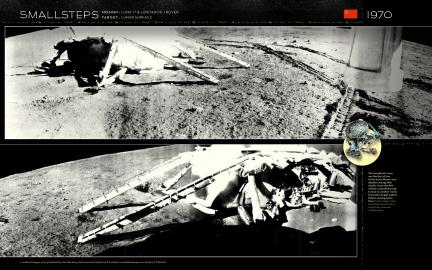 More than a year after Americans set foot on the moon in 1969, the Soviets landed the worlds first remote “rover” type vehicle ever to explore the surface of another world. One almost has to wonder how the politics of this mission even played out to bother even letting it continue. It would hardly seem worthwhile sending a robot to do the work actual humans would be conducting 5 more additional times beyond the historic Apollo 11 landing from the year previous.
More than a year after Americans set foot on the moon in 1969, the Soviets landed the worlds first remote “rover” type vehicle ever to explore the surface of another world. One almost has to wonder how the politics of this mission even played out to bother even letting it continue. It would hardly seem worthwhile sending a robot to do the work actual humans would be conducting 5 more additional times beyond the historic Apollo 11 landing from the year previous.
The rover was named “Lunokhod” and translated means, “Moon Walker”, it carried out a mission for 11 days and traveled 10.5 km. Despite the fact that nobody knows exactly where the rover rests today, the rover and lander were sold at auction in 1993 for $68,500. The auction catalog read that it was, “resting on the surface of the moon”.
Smallsteps Wallpaper: Luna 3
The Soviet spacecraft Luna 3 was the third such craft to be successfully sent to the moon in history. The images were not very great, as can be seen… but it was the first glimpse mankind ever had of the side of the moon that is permanently facing away from us. With the first look at the “dark side of the moon” many people were quite excited and the images were published the world over. It took a total of 29 pictures and was able to image at least 70% of that unseen side of the moon.
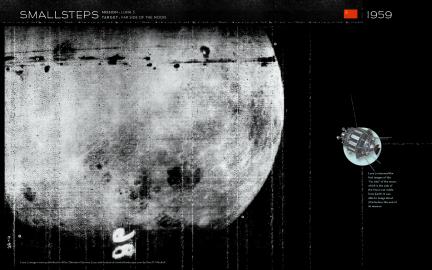
The image is largely intact but for the purposes of presentation I faked the “8” in the number on the bottom and actually added some noise lines.
Smallsteps Wallpaper: V2 Rocket
While looking at all the strange images from old Soviet moon missions on Don Mitchell’s site, I thought it would be interesting to design a set of wallpapers from these early images. I call the series “Smallsteps” as in Neil Armstrong’s famous, “One small step…” quote from Apollo 11. Obviously, there would have been no “giant leap” without a large number of these other “small steps” preceding the Apollo Program (although some of the images I have planned actually come after or during the Apollo program).
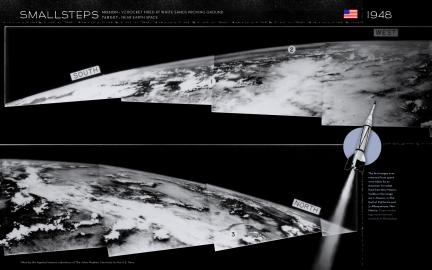
To me, the fact that the human race was even doing space exploration back then seems almost out of time — and then you look at the spacecraft that were sending back these images and it is amazing that anything really ever worked. Tin cans with cameras sending back images that were often just as bizzare and rough as the vessels that carried them. It is even more incredible when you consider that people eventually started strapping themselves to these rockets and floated around the vacuum of space in boxes wrapped with foil.
Seems appropriate enough to start the whole set off with the V2 images of Earth sent back in the shockingly early year of 1948. According the the Air and Space Museum these are the first images of the Earth taken from space in history. The image itself I suspect was just scanned from some print and the number tags and directionals are original (although there were about 17 of them and I removed a majority of them in Photoshop).

